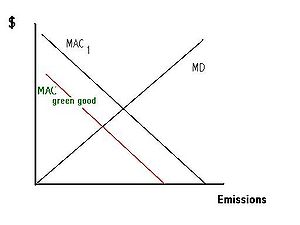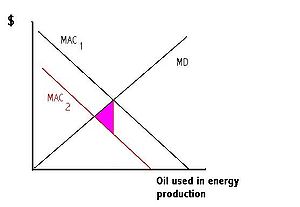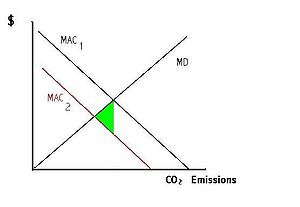Course:ECON371/UBCO2010WT1/GROUP8/Article8
Italy Goes Solar With First Sun-Powered Road
Summary
Italy is considered to be the country that constructed the first motorway. Now, eighty-four years later, it may lay claim to another first: the construction of the world's only solar-powered motorway. It is also the world's most advanced, complete with surveillance systems, tarmac quality sensors, and many other safety and control features. The power generated by the 80 thousand solar panels placed alongside the road will be used to illuminate signs and tunnel lights, power emergency telephones, tunnel fans, and all services installed along the road. All of the road's energy needs will be met by this system, which cost approximately 60 million Euros to develop. Twelve million kWh annual energy production is estimated to save around 31 thousand tons of oil and 10 thousand tons worth of CO2 emissions annually. It is one of the first developments of its kind that marries both infrastructure construction and renewable energy systems. The contractor of this project also plans to revitalize the surrounding areas by investing in massive landscaping projects, beautifying the adjacent hedges and tree lines, planting thousands of trees and plants, and expanding the local forests. Other similar projects have already been developed in Italy; where solar panels were used alongside a roadway to provide power to proximal buildings, and another where they were installed as a sound barrier to protect surrounding neighbourhoods.
Analysis
The construction of the world's first solar-powered motorway touches upon the topic discussed in a previous article, where the city of Sacramento had planned to establish a solar farm on the site of a former landfill. It was interesting to note that this re-purposing of relatively unattractive land would make economical sense, being that it could generate benefits to the municipality in excess of what the land was worth if other development options were to proceed. The analysis of this article suggested that there could be many more sites upon which these types of projects may thrive, but only in terms of their inability to attract more lucrative or economically beneficial projects.
The most interesting part of Italy's solar-powered roadway project is that there is no need to search for abandoned or unused land; renewable energy systems can be embedded within the private or public sector's newest infrastructure projects. This opens the door to many options not previously considered as being part of a company's or country's agenda of sustainable growth. It seems impossible to curb development while simultaneously promoting economic growth, especially in terms of infrastructure. Businesses need to be supported by a backbone of infrastructure in order to develop and thrive in the economy. Roadways and other such means of transport comprise the distribution channels upon which materials and goods are allowed to flow. These are necessary, and there seems to be little progress involved with making paved roadways more sustainable. The immense amount of concrete and tarmac that is plastered upon the earth will not be reduced anytime soon, despite the increased use and development of other means of transportation.
The concept of integrating solar panels alongside these roadways, with the goal of powering all features of the roadway and surrounding structures, seems like the most sensible decision within the confines of necessary development. This type of project boasts many economic advantages over other tentative solar-power projects. Firstly, it eliminates the need for large tracts of undeveloped land upon which to erect the solar panels, which alleviates the demand for that scarce and precious resource and translates to immense savings related to start-up costs. Secondly, the major consumer of the power generated from this system is actually adjacent to the source, avoiding costly delivery charges if the power needed to be sent to a less proximal end user. Thridly, since the system is so readily accessible as opposed to a distant locale away from urban areas, any maintenance needed can be more easily performed. All of these serve to bring down the costs of implementing such a sustainable energy program, which translates to lowering the marginal abatement costs of energy production for the country as a whole. This has all the characteristics of switching to a green good. There are probably many more advantages, but none more important than the estimated savings of 10 thousand tons worth of carbon dioxide emissions and 31 thousand tons of oil every year.
This integration of infrastructure and power generation should serve a prime example of how an economy can grow while incorporating the concept of sustainability at the same time. Italy is no stranger to this sort of activity; a few months ago a similar project was successfully implemented alongside a Sicilian motorway, providing power to buildings in the vicinity. Another motorway in Northern Italy erected solar-panels which doubled as sound-proofing barriers for residential neighbourhoods. These types of projects are paving the way for other applications of sustainable energy procurement that can be incorporated into the very fabric of our infrastructure. Although they may not be the pillars of perfect sustainable development, they are definitely a step - or a short drive - in the right direction.
Prof's Comments
Nice. What was the trigger that got it going here? Is it cost effective, or reliant on external subsidies?


